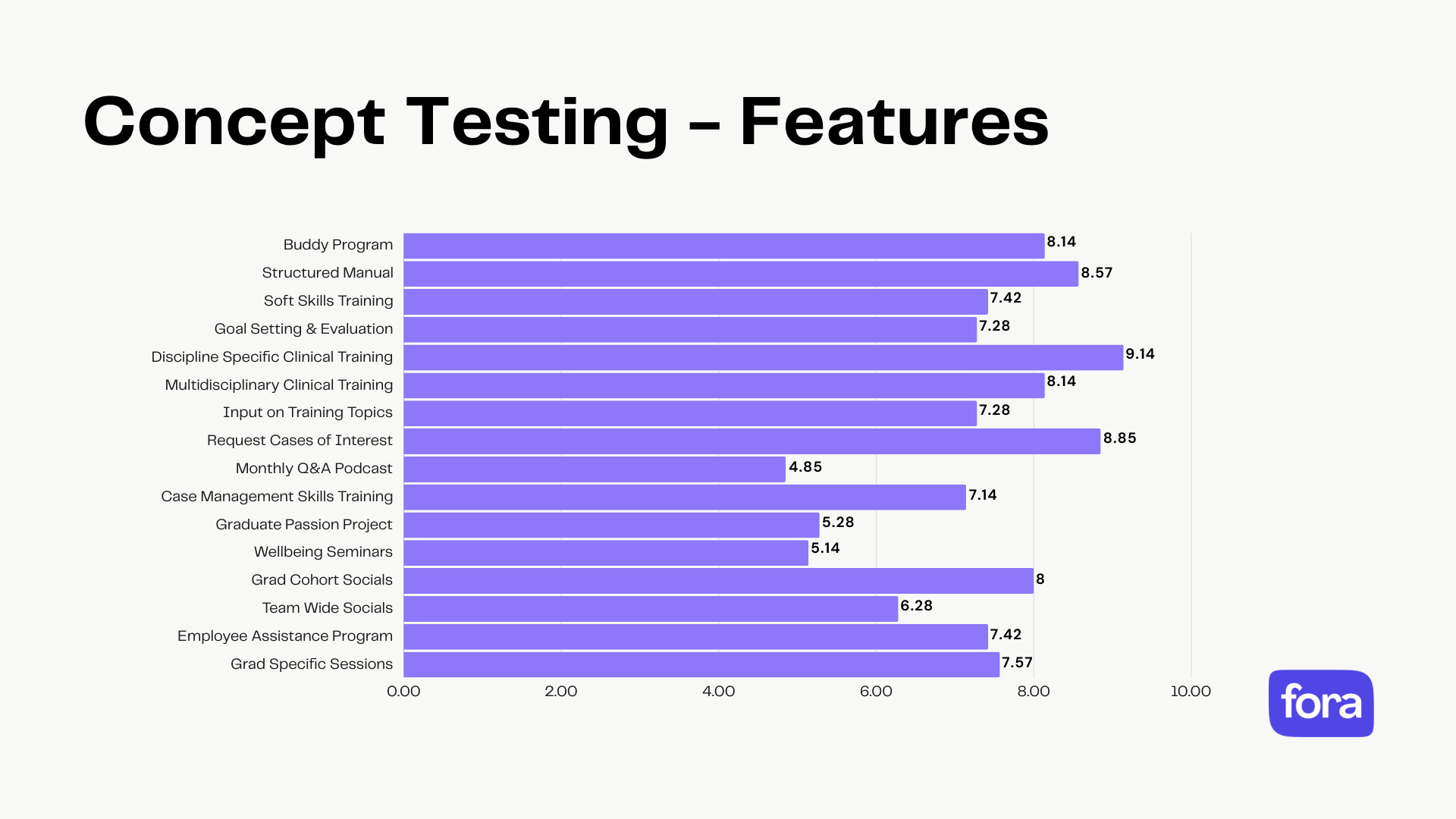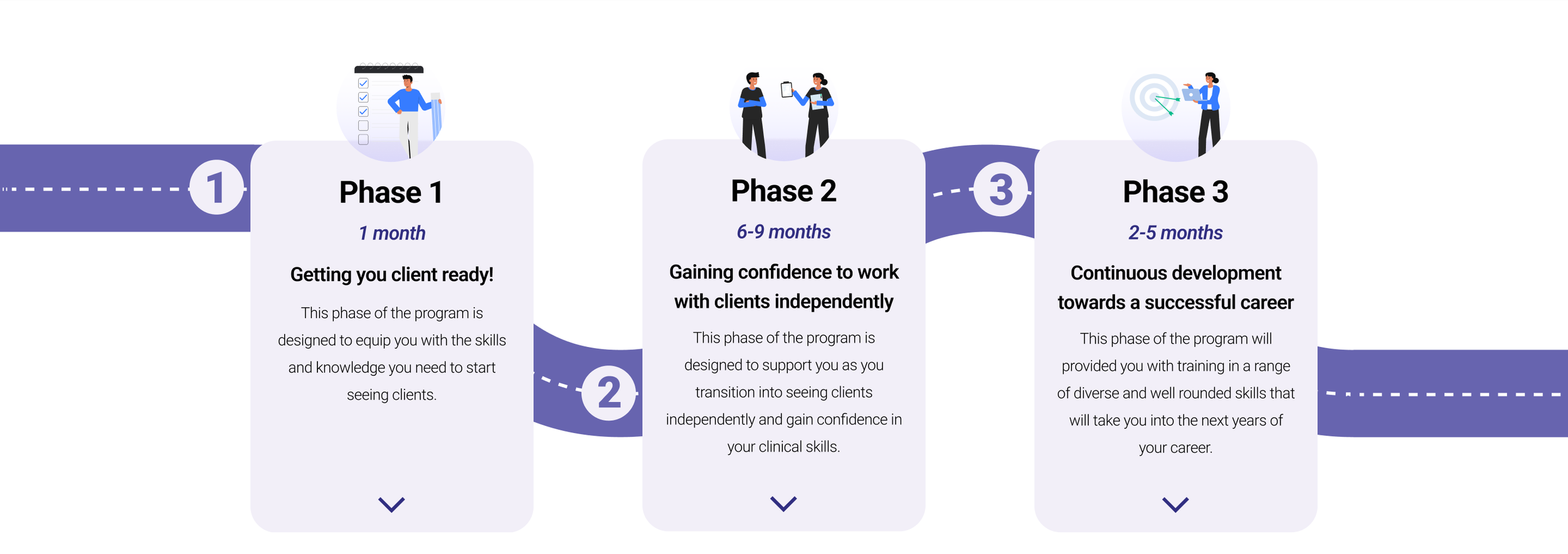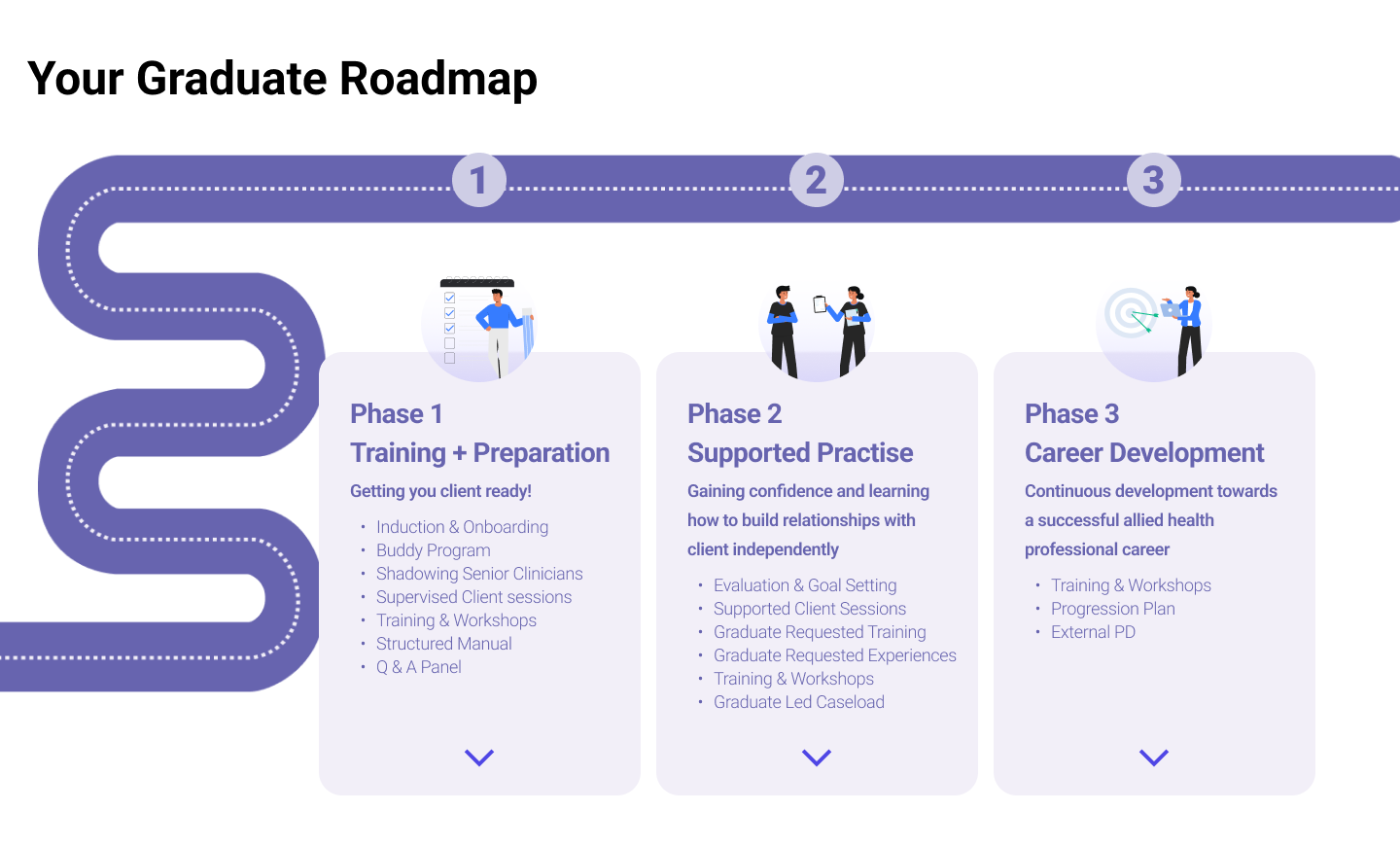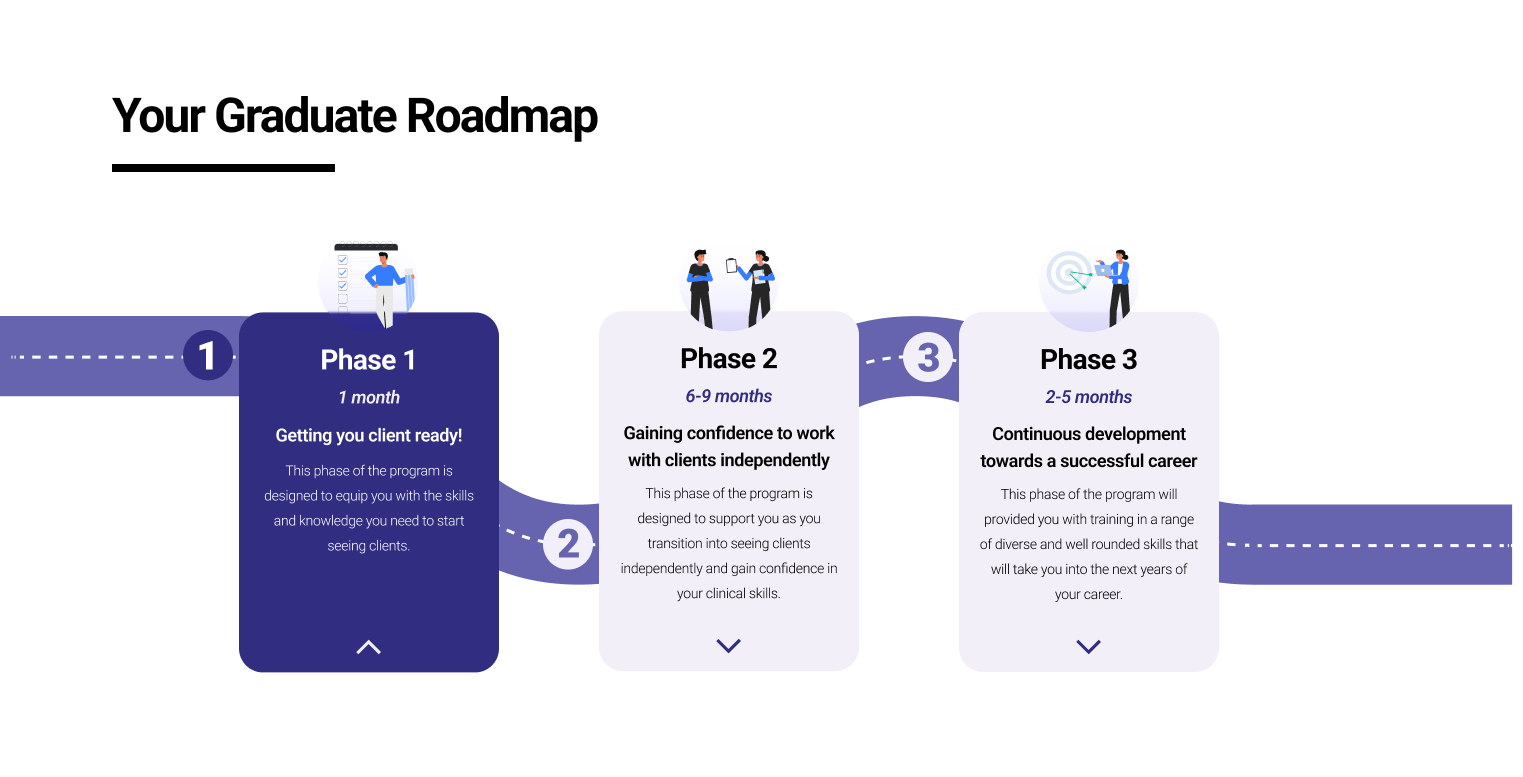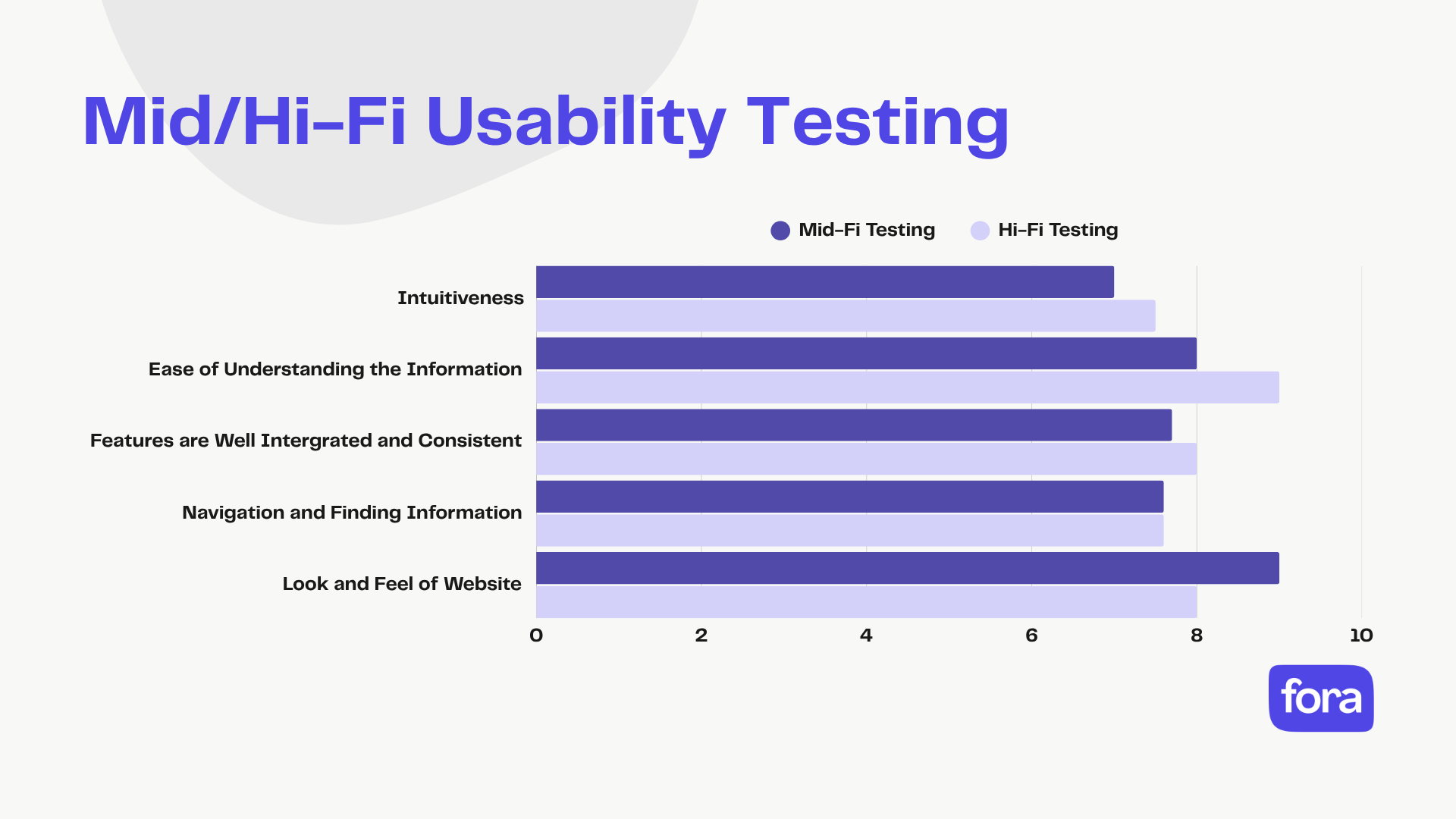Overview
Fora Therapy is a mobile allied health service provider with a community of Allied Health Assistants (AHAs) all over Australia, and an in-house team of Allied Health Professionals (AHPs) including speech pathologists, occupational therapists, and physiotherapists.
AHAs are typically allied health students who help clients implement therapy plans created by AHPs. As Fora is looking to hire graduating AHAs as new AHPs, they want to understand the needs of allied health graduates during their first year as a clinician and offer as much support as possible.
I worked within a team and designed a brand new graduate program to address the needs and wants of allied health graduates. My key contributions in this project include user interviews, competitor research, synthesis, ideation workshop facilitation, UI design and usability testing.
MY ROLE
UX/UI Designer
SPACE
Healthcare
TOOLS
Miro, Figjam,
Figma, Canva
TIMEFRAME
1 month
Understand the problem space
To gain insights into the problem space and the target users, we conducted desktop research, 1:1 interviews, sent out surveys and analyzed 20 competitors.
We interviewed 6 AHAs (our target audience) about what they value when searching for graduate programs, however, through interviews we found some AHAs don’t have a clear vision as they haven’t gone through the experience.
Thus we also interviewed 4 AHPs who already work full time and asked what they found was the most positive & valuable forms of support in their graduate program or first job and what they thought was missing or could have been improved.
Key Interview Insights
New graduates want to learn as much as possible in their first job to lay a solid foundation for the future.
New graduates are not clear about their roles or goals.
New graduates are not familiar with their job so they need lots of support and feedback from experienced professionals.
New graduates want to have regular social and team events in a mobile clinic so that they won’t feel isolated or lack support.
New graduates need both professional and administrative training (such as planning sessions, calendar management) so they could do the work well.
New graduates want slow integration into a full caseload so that they have time to build their skills and confidence up.
Define the problem
Upon summarizing & synthesizing insights gathered from our research, survey and interviews, we uncovered the major pain points that allied health graduates felt needed to be addressed.
Major pain points
Lack of Clinical Support & Feedback
New graduates feel they don’t receive the level of clinical support they would like in terms of 1:1 mentoring, supervision, case reviews & feedback from senior clinicians.
Lack of structure
New graduates feel frustrated with the lack of structure in their first job and are uncertain about their role & the goals they need to achieve.
Unprepared for independent practice
New graduates don’t feel adequately prepared or trained to provide services end to end (i.e. paperwork, processes, clinical knowledge, scheduling) when they see clients independently.
Loneliness & Isolation
Due to the nature of a mobile clinic, new graduates feel isolated and lack connection with the team.
Problem Statement
Newly graduated speech pathologists and occupational therapists feel inexperienced and anxious about transitioning into their first full time job and want access to support, information and knowledgeable professionals.
We mapped out the journey of allied health graduates from researching their first full time job all the way to their first few months in the role to uncover opportunities to address their problems and improve their experience.
Design potential solutions
I held an ideation session with 6 new graduates focusing on 2 key How Might Wes (HMWs):
How might we create a supportive experience for graduates?
How might we help make sure graduates feel confident and prepared for their first solo client session?
Based on the ideas generated & voted on by new graduates, we decided to design a 12 month graduate program.
We plotted all the potential features on a Minimum Viable Product (MVP) matrix and focused on the Quick wins, which could generate high impact and require low effort.
Concept Testing
From our synthesized data and MVP, we pulled key features to be included in the 12 month graduate program.
To make sure that each feature included in the graduate program addresses the needs and wants of new graduates, we concept tested these with 7 new graduates and asked them to rank how important each feature on a scale of 1-10. (1 being “not essential” and 10 being “absolutely essential’).
The results validated discipline specific clinical training, requested cases of interest and a structured manual are most important.
While monthly Q&A podcasts, graduate passion projects and wellbeing seminars could be excluded for now.
Delivering the solution
The Graduate Program
With all this in mind, we built out the program structure, which is made up of 3 phases:
Phase 1: Training & Preparation (1 month ) ;
Phase 2: Supported Practice (6-9 months ) ;
Phase 3: Career Development (2-5 months ).
This establishes a clear structure for the year. Combined with a comprehensive manual that outlines expectations for different phases and includes checklists, guides and resources, as well as progression plans, it effectively addresses the pain point of lacking structure.
Features with high ranks in the concept testing were incorporated into different phases of the program to help new graduates build confidence in independent client work and develop a variety of skills through professional development training and workshops.
There are also some key features that will be recurring throughout the 12 months, such as Graduate Cohort Meet-ups, Wellbeing Support and Social & Office Days to help graduates combat feelings of isolation and build connections with their peers and the entire team.
We also conducted two rounds of usability testings to improve the overall content, phase length, and layout of the program with 6 new graduates.
Quotes from usability testings
“I love the fact it has a structured manual and workshops. Training workshops are huge, a massive help."
“Structure is really clear. Lots of support around training and workshops are really good."
UI Design & Iterations
We designed the UI of the webpage which showcases the key features of the program and collects sign-ups.
During the mid-fi usability testing, 0 out 3 participants intuitively clicked on the program roadmap tiles. Thus we re-designed the roadmap and added expanded arrows and state colors to make it more obviously clickable.
After several iterations, the latest hi-fi testing results showed great improvement.
And Under the guidelines set out by the Web Content Accessibility Guidelines (WCAG) 2.1, 100% of the content on our latest iteration meets AA standards for color contrast, text spacing and readability.
Final product
Clean & Easy to scan
The landing page is divided into various sections to introduce the company, key features & stages of the program, the team and frequently asked questions.
Simple form to collect leads
A simple form to collect possible leads, with cheerful animations to indicate successful registration.
Clear structure & Detailed info
The landing page highlights the key features of the program and three main stages, with detailed information of each stage.
Reflections
Test early & often - By concept testing the key features via a survey, we were able to cut features deemed as low priority early in the design process which saved a lot of time; Also through unmoderated testing of UI components, we got a better idea of what the user values and wants to see.
Watch out for feature creep - As we brainstormed what features could be included in the program, many blue sky ideas such as a weekly podcast and a guide book or database were brought up. It’s important to focus on the features that fall in the top right section of the MVP (high impact, low effort) and to remain on time.



